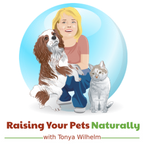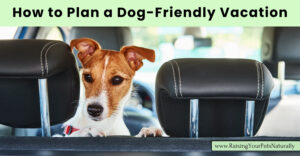Google Adsense—>

Dog Anxiety and How to Help a Dog with Dog Anxiety
Socializing a Fearful Dog with Other Dogs
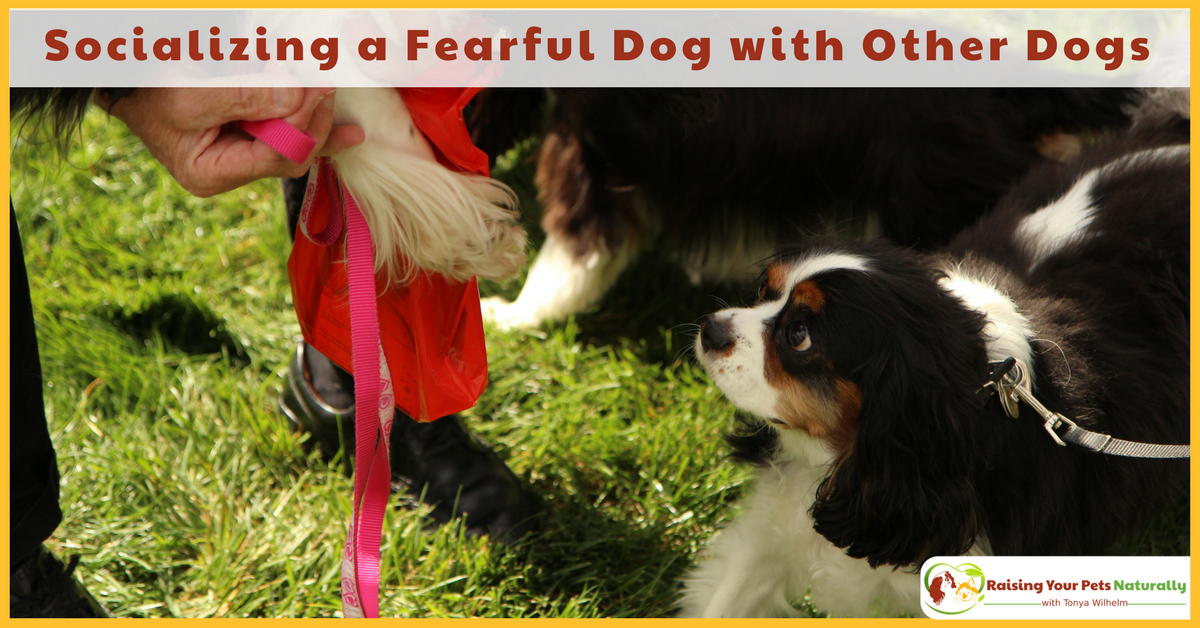
I’m often asked how to socialize a dog that is fearful or has anxiety. First, the word ‘socializing’ to me broadly implies people, places, and things. In this dog behavior blog, I will discuss socializing a fearful, scared, or nervous dog around other dogs. In future posts, I will address dogs afraid of other people.
When I’m helping a dog training client, I like to address the whole dog, not just the dog behavior and training aspect of the “problem.” This usually starts with the dog taking a trip to the vet to ensure their health is good and there isn’t any underlying medical condition that also needs attention. Medical issues and pain can often lead to behavior problems or issues.
Next, I encourage dog parents to provide their carnivores a healthy, species-appropriate diet of fresh, whole foods. In a lot of cases, the fearful dogs I work with also have a Shen Disturbance. According to Traditional Chinese Medicine Theory, when a dog has a panicky personality, full of stress and anxiety, he would be considered to have a Shen Disturbance. The Heart Shen encompasses the spirit, soul, and mind. When a dog is in balance, the Heart Shen allows the dog to be calm and relaxed, something fearful dogs cannot do. Treatment and training would include nourishing, or calming the Shen, to help the dog naturally cope and relax.
For dogs with a Shen Disturbance, a cooling diet such as duck, rabbit, or cod can be beneficial. Other foods that can help balance a nervous dog include sardines, sweet potatoes, eggs, seaweed, kelp, apples, and spinach.
Dog Zen Lifestyle
Again, when helping a dog with canine anxiety, or any other behavior issue for that matter, it’s important to address the dog’s entire lifestyle. Helping a dog be relaxed at ease and confident in the home is essential to a dog’s well-being. Calming music, canine massage, confidence-boosting games, fun tricks, sniffy walks, exercise, and positive training can go a long way toward helping your dog’s behavior and overall training success.
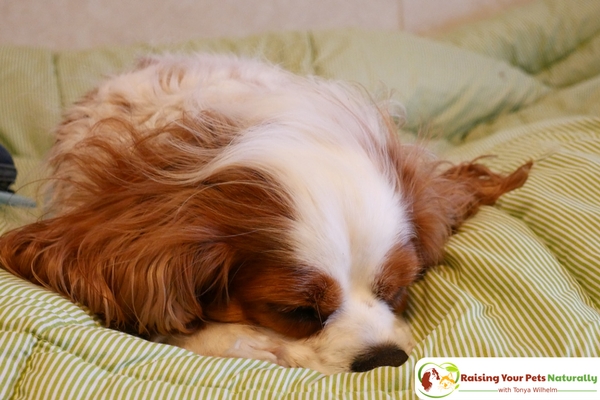
Brush up on Basic Dog Training Cues and Behaviors
If your goal is to introduce your fearful dog to other dogs, it would be advisable to brush up on a few helpful dog training behaviors such as loose-leash walking, watch, come when called, and target. These four behaviors can be used during dog to dog meetings and interactions. If your dog knows them well, your dog greetings will be much smoother and more successful.
Choosing Dog Friends
A calm, trained dog is a much better candidate than an active, untrained dog. By choosing a friend and dog that are a well-oiled machine, you won’t have to worry about what the other dog is doing; instead, you can focus on your own dog. I wouldn’t recommend trying to socialize a fearful dog with an unknown dog and unknown human—there are just too many variables. You really want your dog’s experiences to be positive and uneventful.
The Dog-to-Dog Greeting Process
This step may go slowly, from days, to weeks, months or even longer. It really does depend on your dog’s current behavior and how often you practice. The important thing to remember, is if your dog is afraid, then this is not to your dog’s advantage. There is no rule book that says your dog must love or play with other dogs.
Follow The Leader
One of my favorite activities for new dog interactions is to play follow the leader. Allow the new dog to walk a designated path. You and your dog can be standing off in the distance. If this is too challenging for your dog, read dog-to-dog reactivity first. The article addresses space and how to get the space you and your dog need for this exercise.
After the new dog walks the path and steps out of the way, where your dog is not concerned about him, start to walk your dog along the path. Allow and even encourage your dog to sniff the footsteps and even urine markings of the first dog. You can even throw in bonus treats after your dog has a good sniff. If you find that the treats distract your dog from sniffing and now your dog is more attentive to you instead of the ground, stop using them for this step.
After your dog has walked the path, take him off the path and allow the first dog to re-walk the path, sniffing and smelling your dog’s footsteps and markings. By doing this, you are allowing both dogs to get to know each other at a distance that both should be happy and comfortable with. No pressure, no stress.
The next step in follow the leader is to start following your friend and her dog at a distance where your dog and your friend’s dog are both comfortable. Not too close. You want to be able to engage your dog through this step by occasionally asking your dog to watch you and target. This is to ensure you can get your dog to respond to a few of his cues even in the presence of the other dog. If not, increase the distance between the dogs.
Over time, decrease the distance you are following from. Eventually, as you get closer to the other dog, you will actually pass the other dog, but don’t say hi yet. When passing, pass on the side of the person, with your dog on the other side. So, two humans are next to each other, not the dogs. When you pass the other dog, pass at a distance where you and your dog can be successful. Maybe five feet or ten feet away, whatever that distance is that your dog can pass and still pay attention to you. Repeat this process until it becomes easy for both you and your dog and the distance between dogs decreases. This may be the same session or over many sessions; once again, it depends on your dog’s behavior and anxiety level.
Dog Parallel Walking
Once you and your dog are easily passing your friend and her dog, set up another dog training session, where you start to walk parallel with each other instead of passing. As you and your dog approach your friend and her dog from behind, instead of passing, stay parallel with each other, still with the humans next to each other, not the dogs. Keep enough distance between you that your dog can walk politely and confidently with you.
Butt-Sniff Time
As you and your dog become masters at parallel walking, it’s time for a little butt-sniff action. In the middle of your parallel walk, ask your dog if he wants to go say hello. Casually walk your dog toward the other dog, preferably with your friend keeping the other dog’s attention on her to allow your dog to do a quick butt-sniff. After a second or two, say “Okay!” and walk your dog away, back to the parallel walk. Short and sweet and not in your face: no pressure, nice and easy.

Increasing Time Together
Assuming your dog wants to continue with the interactions, start to increase the time your dog is allowed to sniff and allow the other dog to sniff back prior to asking your dog to walk again. You are looking for loose, comfortable gestures, not tight, stressed body language.
The important thing to remember is to listen to your dog and what he is telling you. If he doesn’t seem interested or seems stressed, don’t put pressure on him to say hello. He’s just not that into it, and that’s okay. I’m a firm believer in working with a qualified dog behavior counselor to help guide you through this process. Having an expert on your side, explaining the process, pointing out body language, helping you with timing can be invaluable. Just having someone there to support you can not only help your knowledge but also can provide you with a boost of confidence that you may need to tackle this dog behavior. You don’t have to do this alone.
Read More– Dog Body Language with Pictures and Video, Dog Body Language with Pictures and Video and Natural Calming Aids
Your questions or comments are welcome below.
Are you looking for even more ways to stay up to date with Raising Your Pets Naturally? Sign up for the newsletter for more tips and promotions. Don’t forget to be social and Like, Follow and Subscribe.
Facebook Twitter Pinterest Instagram YouTube
 |
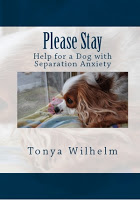 |
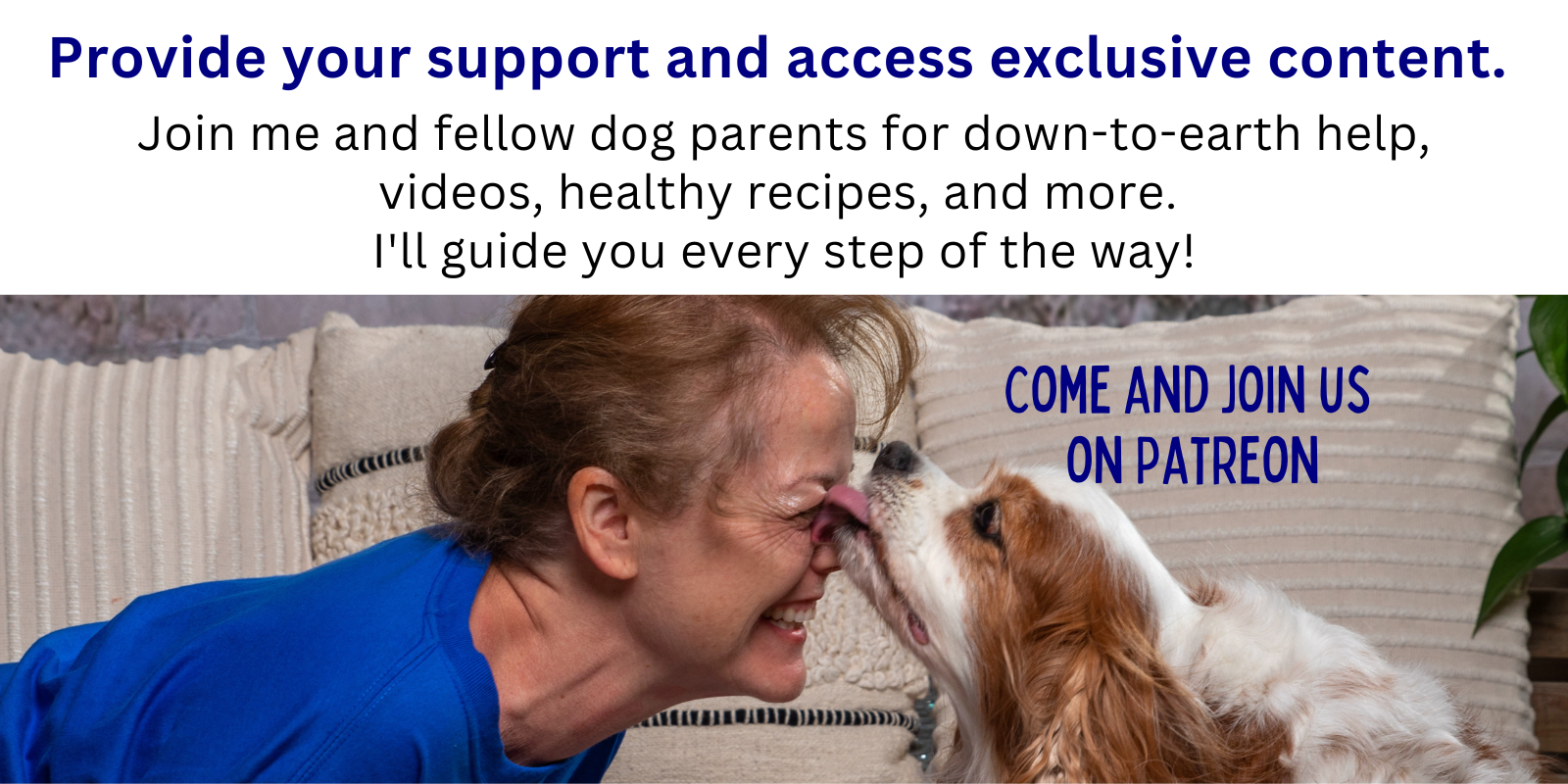
Google Adsense—>

